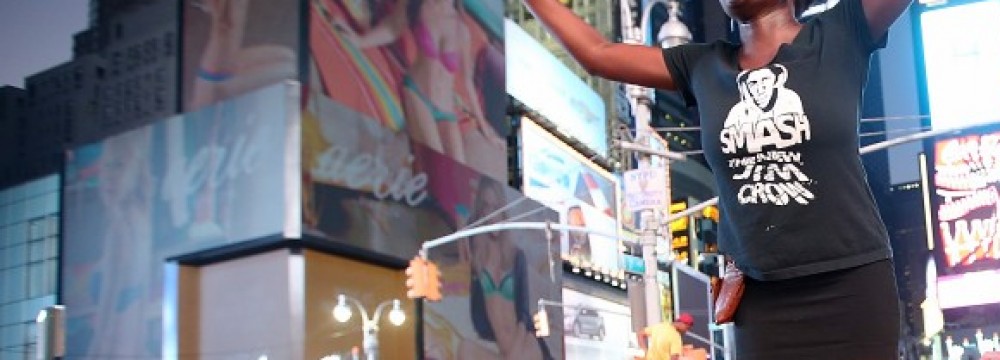The first Jim Crow was a system of laws and practices begun as soon as the Civil War ended. It was built on the two infamies, as Frederick Douglass characterized them, of the convict leasing system and the lynch law. Its purpose was 1) to replace the cheap labor provided by 4 million African Americans liberated in the Civil War and upon which the economy of the slavocracy was wholly dependent, 2) to deny the freedman the vote and any protection of law, and 3) to preserve the ideology of white supremacy which the defeated South required as the rationale for the total subjugation of African-Americans.
With the adoption of the 13th Amendment in 1865 which prohibited involuntary servitude except as punishment for crimes, the defeated slave states immediately began passing the so-called “black codes” of 1865 and 1866. The center piece of these black codes was the criminalization of “vagrancy”, which was defined as failing to be contracted to work for a white man. These laws provided huge supplies of convict labor that was leased to plantations, farms, logging camps, railroads and mines and provided a major source of revenue to the states and to the local sheriffs, deputies, judges and clerks who received fees for every arrest and conviction. This apparatus provided great financial incentive to produce an ever-larger supply of convict labor to rebuild the South and spur its development into the modern industrial economy.
The almost limitless, renewable supply of convict labor had a distinct advantage over slave labor in that it was cheaper. Slaves were the property of the slave owner, representing a capital investment, and as such had to be maintained, fed, clothed, and housed, in order to protect the slave owner’s investment. But convict labor represented no such capital investment. In fact the corporations leasing convicts had no incentive to maintain them. The corporations actually had a financial incentive to provide the bare minimum of necessities needed to maintain the convicts in working condition over the short term. The less provided the convict laborers, the greater the profit of the corporations. A mortality rate of 10% per month was not unheard of in the corporate convict labor camps. And the supply of fresh African-American convict laborers was always available under Jim Crow.
Jim Crow existed over the 100 year period from the end of the Civil War in 1865 to the passage of the voting rights act in 1965. There was a brief 10 year period, beginning in 1868 with the passage of the 14th and 15th Civil Rights Amendments, during which Federal troops were sent into the states of the former confederacy to enforce these Amendments. Free schools were established, African –Americans voted, owned property, and were elected to office. This period, Radical Reconstruction, lasted until 1877 when all Federal troops were withdrawn from the South in a political deal that gave a contested Presidential election to Rutherford B. Hayes and gave the former slave states back to the white supremacist rulers and the Ku Klux Klan, which enforced Jim Crow law with naked terror for the next 90 years.
Most important in the maintenance of this system was the denial of the right to vote to African –Americans. States limited the franchise to men whose grandfathers had voted, thus excluding freedmen whose grandfathers were slaves. States required African-Americans to pass literacy tests which asked such questions as “Can you name the 67 county clerks of this state?” or “How many bubbles are there in a bar of soap?” States, not exclusively Southern, charged a poll tax. Louisiana charge blacks one dollar to vote in 1917, equivalent to 18 dollars today. And of course, the Klan or its threat was ever present, parked outside the voting booth in a pickup with a rifle mounted over the back window and a large confederate flag waving atop the antenna. At the time the Voting Rights Act was passed in 1965, only 7% of Southern blacks voted.
The ultimate terror of the Klan, the White Citizens Councils, and similar groups with their white supremacist sympathizers was the extra-judicial executions of the lynch law.
Lynchings occurred to persuade freed labor to return to the plantations or eliminate black landholders whose land was then seized; they were carried out as reprisals for alleged rape which enhanced the status of the Klan as defenders of the virtue of white Christian womanhood and propagated the myth of the bestial black male; and from 1865 on through 1965 they were used to destroy every attempt to bring civil rights to the South. The first massive campaign against implementation of the 13th, 14th and 15th civil rights Amendments was headed up by the Klan in 1868 and resulted in the death of 1300 of the Amendments’ supporters. More than 2 dozen mass lynchings were reported well into the 20th century.
An estimated 4700 people were lynched between 1882 and 1968, 3400 blacks and 1700 whites. Many of the whites were immigrants or advocates of civil rights. Lynchings were often held during the day in a festival like atmosphere. Men, women and children as young as 10 years old were hanged, mutilated, tortured and sometimes set on fire. White families with young children attended the spectacle. Smiling men had their photographs taken next to the smoldering corpses. Body parts were taken as souvenirs.
Most people in the United States believe the evils of slavery ended with the Civil War.
see www.pbs.org/tpt/slavery-by-another-name
This 90 minute documentary premiered at the 2012 Sundance Film Festival and describes the re-enslavement of African-Americans from the end of the Civil War to World War II.



